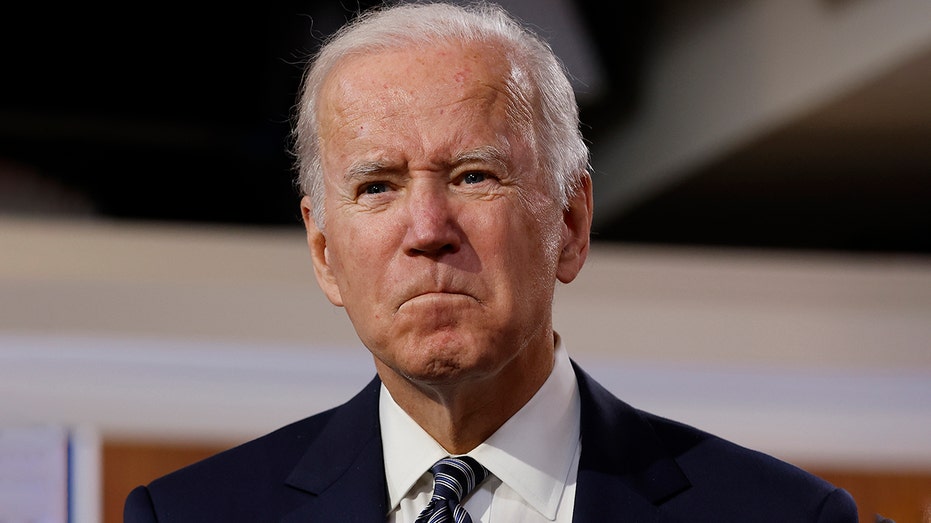Biden's spending bill could double child care costs for middle-class Americans
Families could pay up to $27,000 more for child care each year under Biden's spending bill
Very few tax increases in original Build Back Better plan will be in final bill: Cantrill
PIMCO Managing Director and Head of Public Policy Libby Cantrill sits down for ‘Barron’s Big Interview’ to discuss the implications of Biden’s spending agenda.
President Biden has pledged to limit child care costs with the passage of his sprawling social spending and climate plan, but a new analysis suggests that millions of middle-class families could actually see their expenses double under the legislation.
The study, published on Friday, was authored by Casey Mulligan, a University of Chicago professor who previously served as chief economist of the White House Council of Economic Advisers during the Trump administration.
BIDEN PITCHES REVAMPED MILLIONAIRES TAX, GLOBAL MINIMUM TO FUND SPENDING BILL
It shows that child care costs could increase by up to 102% – and as much as 122% – for some Americans under Biden's signature economic agenda, which would cap child care costs at no more than 7% of parents' income for those earning their state's median income. Parents are required to be working, searching for a job, in school or dealing with a health issue in order to qualify.
For a family with an infant and a 4-year-old, that could mean an additional annual expense of up to $27,000 unless they qualify for the subsidies in the Democrats' spending bill. About half of families using non-parental child care would fall into that category, according to the analysis.

US Democratic presidential candidate Joe Biden speaks about on the third plank of his Build Back Better economic recovery plan for working families, on July 21, 2020, in New Castle, Delaware. (Photo by BRENDAN SMIALOWSKI/AFP via Getty Images / Getty Images)
"It is challenging to forecast how families would cope with such harmful and disruptive changes in childcare costs," Mulligan wrote. "Many families may respond by withdrawing a parent or relative from the workforce to provide the care."
The increase stems from the bill's increased regulation of the industry and the lack of incentives for providers to offer cheaper care, Mulligan said. Although the bill mandates higher wages for child care workers and also requires additional staffers per job in order to meet government-defined quality metrics, it only offers subsidies to certain low-income households (the program would eventually expand in 2025 to those earning up to 250% of their state's median income).
The median household income in the U.S. was $67,521 last year, according to the Census Bureau.
There are other analyses that suggest Biden's bill could ultimately hurt the middle class.
The left-leaning People's Policy Project estimated that families' costs could soar by an average of $13,000 if Biden's bill becomes law, largely due to mandated higher wages for child care workers. While the measure is intended to increase child care worker wages to the wages currently received by elementary school teachers, it does not offset the pay raise with subsidies for all parents.

President Biden answers reporters' questions after delivering closing remarks for the White House's virtual Summit For Democracy in the Eisenhower Executive Office Building on Dec. 10, 2021, in Washington, D.C. (Chip Somodevilla/Getty Images / Getty Images)
The current average cost of center-based infant care is $15,888 a year, with workers paid an annual $25,460. Biden's plan would raise workers' wages by 138%, to a new average of $60,660 a year. That could push the overall cost of child care centers to about $28,970.
What's more, the plan subsidizes the price of child care by replacing flat user fees with an income-based co-payment. Costs that surpass a certain family's threshold will be paid for by the government – but if families earn just $1 more than the median income in the first year, they're stuck footing the entire bill.
GET FOX BUSINESS ON THE GO BY CLICKING HERE
"Under this scenario, there will be many dual-earning couples who cannot afford child care if both of them continue to work, but could afford child care if one of them quit their job and thereby brought their family income below the eligibility cutoff," the author of the study, Matt Bruenig, wrote. "Normally people who quit jobs to take care of their kids do so in order to save the money they’d have to spend on child care. Under this plan, they have to quit their job in order to afford child care."
